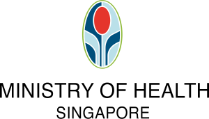TEL Stage 4 from Tanjong Rhu to Bayshore to open for passenger service on June 23

Published on
06 Mar 2024
Published by
The Straits Times
SINGAPORE – Passenger service on the fourth stage of the Thomson-East Coast Line (TEL) from Tanjong Rhu to Bayshore will start on June 23, improving accessibility for those living in and travelling to the East Coast region, Transport Minister Chee Hong Tat said on March 5.
The seven new MRT stations on the 10.8km stretch are Tanjong Rhu, Katong Park, Tanjong Katong, Marine Parade, Marine Terrace, Siglap and Bayshore. They will be connected to the first three stages of the TEL, from Woodlands North to Gardens by the Bay.
Passengers can use them for free as part of a preview on June 21, Mr Chee said during a debate on the Ministry of Transport’s (MOT) budget.
In a statement, the Land Transport Authority (LTA) said passengers can do so between 10am and 9pm on the preview day to familiarise themselves with the stations.
With the opening of TEL Stage 4, about 235,000 households will be within a 10-minute walk of a TEL station, said LTA.
LTA said commuters can save up to 50 per cent of travelling time when using the MRT line. For example, a Marine Parade resident will take 20 minutes to reach Shenton Way on the TEL, compared with the current 40 minutes by bus and train.
On Feb 6, LTA said it had handed over the stations to TEL operator SMRT for a final set of tests.
This involves integrating TEL Stage 4 with the first three stages of the rail line. SMRT will also run further tests to get its operations ready to serve passengers.
Civil and structural works for the stations, and the testing and commissioning of trains and systems, have been completed.
LTA told The Straits Times that after the opening of TEL Stage 4, trains will arrive every three minutes during peak hours and six minutes during non-peak hours.
The opening of TEL Stage 4 will bring Singapore’s rail network to more than 210km. The Government’s target is to expand it to about 360km by the 2030s, putting eight in 10 households within 10 minutes’ walk of a train station.
Several more MRT stations will be completed in 2026.
These are the Bedok South and Sungei Bedok stations, which form the fifth and final stage of the TEL, and the Xilin station on a Downtown Line (DTL) extension.
The 2.2km extension will link the existing Expo station to Xilin, and then Sungei Bedok, which will be an interchange stop for the TEL and DTL.
The East Coast Integrated Depot for trains and buses, which will have connecting tunnels to the TEL and DTL, as well as viaducts from the East-West Line, will also be ready by 2026.
LTA had previously said TEL Stage 5 and the depot would be ready in 2025, a year later than the original 2024 deadline owing to delays due to the Covid-19 pandemic. The DTL extension was also due to be ready by 2025.
When contacted, LTA said the delays have been further aggravated by construction challenges of tunnelling near existing critical infrastructure. It did not specify what these were.
Mr Chee also said that amid higher maintenance costs, an incentive will be given between 2024 and 2028 for rail operators to maintain rail reliability standards, invest in workers and improve labour productivity.
“Our next goal is to work closely with operators to achieve high reliability, while keeping costs sustainable,” said the minister.
The new Rail Reliability and Performance Incentive follows the Rail Reliability Incentive that ran from 2020 to 2023. Under that scheme, up to $173 million was disbursed to operators each year if they achieved one million mean kilometres before failure (MKBF) or more. MKBF is an engineering measure of rail reliability.
In addition to meeting safety and service quality-related qualifying conditions, and one million MKBF or more, LTA said the new scheme requires operators to “minimise long disruptions and achieve productivity improvements”. It did not elaborate further.
In Bukit Panjang, the LRT will resume dual-loop operations on Saturdays from March 16, between 11am and 1pm, and 5pm and 7pm, LTA said.
Currently, dual-loop services are available only at peak hours on weekday mornings and evenings.
During off-peak hours, the Bukit Panjang LRT has been operating a single loop on Service B from Petir station to Choa Chu Kang since renewal works to improve the line’s reliability started in December 2019.
LTA said it will monitor how the line performs before deciding to extend the dual-loop service to cover more off-peak hours.
From March 22 to June 30, rail service on the Bukit Panjang LRT line will end an hour earlier, at 10.30pm, on Fridays, Saturdays and Sundays. This is to allow more time to test new vehicles and systems that will be rolled out.
Those affected by the early closures are advised to take buses serving Bukit Panjang and Choa Chu Kang.
The vehicles being tested include two new trains slated to enter service in the third quarter of 2024. They are among 19 trains that will replace the line’s first-generation vehicles that have been used since 1999.
The second-generation trains, introduced in 2014, are also being upgraded.
LTA said work to replace the Bukit Panjang LRT’s signalling system, which helps to direct rail traffic and keep trains a safe distance apart, is also progressing well.
Elsewhere, work to improve the platforms at Sengkang LRT station will start in March to improve commuter flow, said LTA.
There will be four dedicated stopping points in total for the four routes along the east and west loops served by the station, up from two. Right now, there is just one train-stopping location per platform for commuters to board either an eastbound or a westbound train.
New signs, queue markings and a new tactile guiding system will also be put in place to make it easier for passengers to get on and off the trains.
LTA said the first of 25 new two-car trains for the Sengkang-Punggol LRT will arrive by the end of 2024. The trains will undergo testing and commissioning before entering service. They will replace existing one-car trains and some two-car trains, raising the passenger capacity of the line.
LTA also said construction on Hume MRT station in Bukit Timah, located between the Beauty World and Hillview stops on the Downtown Line, is progressing well and on track to open in 2025.
Its opening was delayed because developments in the area and ridership growth did not warrant the station opening. It was later announced that it would open by 2025, on the back of initiatives to redevelop the Rail Corridor and the former Bukit Timah Fire Station.
More berths at Tuas Port
On the maritime front, the authorities said three more berths will open at the Tuas mega port by the end of 2024. This will take the number of operational berths in the port to 11.
The port is being developed in four phases, with the first having opened officially in September 2022.
Reclamation work on the port’s second phase is about 70 per cent done, with completion expected in 2027, said the Maritime and Port Authority of Singapore (MPA).
MPA has started planning for reclamation work in the third phase, and the reclamation is set to be completed in the mid-2030s.
When completed in the 2040s, the port will be among the world’s largest fully automated terminals.
To help the maritime industry become more sustainable, MPA will put aside $15 million until 2030 to co-fund with companies the qualifying costs of adopting approved sustainability solutions.
Small and medium-sized enterprises can get 50 per cent co-funding, while other firms can receive 30 per cent, up to $30,000 per solution.
Separately, MOT said it will form an alliance for action by March with six organisations to improve the flow of goods through Singapore’s seaport and airport.
The entities are logistics firm DB Schenker, port operator PSA, air cargo portal Cargo Community Network, ground handler Sats, Singapore Airlines and the Singapore Aircargo Agents Association.
Mr Chee said the aim is to at least halve the time taken for such trans-shipments through Singapore, which may at times exceed five days currently.
The alliance does this through better coordination among logistics players, and digital solutions to make bookings more convenient through a platform that gives logistics firms real-time data on available flights or vessels.
Singapore’s trans-shipment procedures will also be simplified.
From the first quarter of 2025, companies that trans-ship goods via Singapore’s land checkpoints to its airport or seaport, and vice versa, will require just one trans-shipment permit instead of two.
Source: The Straits Times © SPH Media Limited. Reproduced with permission.
ALL views, content, information and/or materials expressed / presented by any third party apart from Council For Third Age, belong strictly to such third party. Any such third party views, content, information and/or materials provided herein are for convenience and/or general information purposes only. Council For Third Age shall not be responsible nor liable for any injury, loss or damage whatsoever arising directly or indirectly howsoever in connection with or as a result of any person accessing or acting on any such views, content, information and/or materials. Such third party views, content, information and/or materials do not imply and shall not be construed as a representation, warranty, endorsement and/or verification by Council For Third Age in respect of such views, content, information and/or materials.







